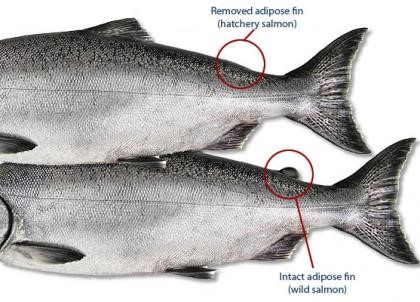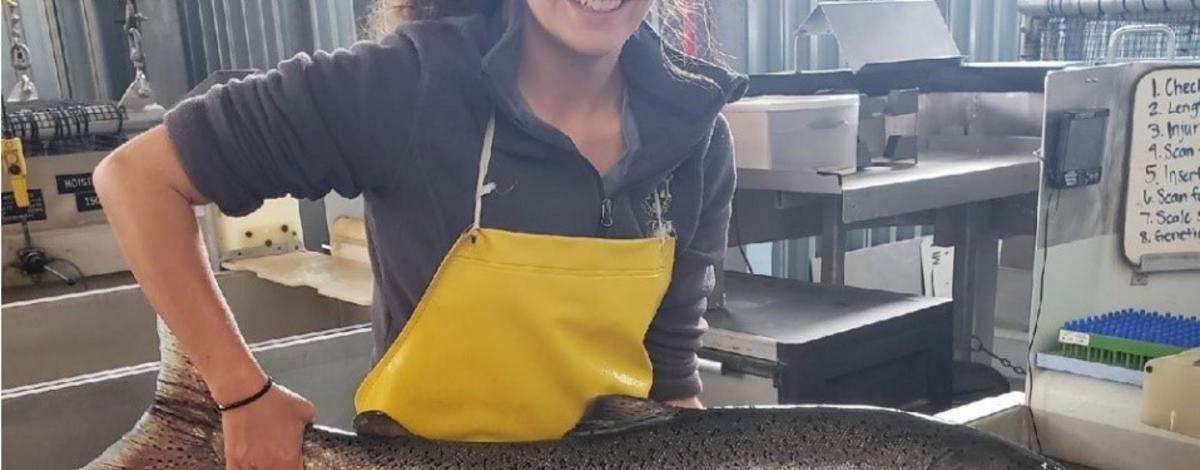Idaho boasts amazing salmon and steelhead fishing opportunities. From monster B-run steelhead to sporty spring Chinook Salmon, the options abound. Interested in keeping your catch? Harvest of anadromous fish is often restricted to fish with a clipped adipose fin. Why? An adipose clipped fin indicates that a fish is from a hatchery. Because many salmon and steelhead populations in Idaho are listed as threatened or endangered under the Endanger Species Act, usually wild fish cannot be harvested in a recreational fishery. With the millions of salmon and steelhead smolts released annually in the Snake River basin, one might wonder how biologists keep track of hatchery fish if some have an adipose fin and some are clipped. It is possible that you’ve caught a hatchery fish that was a wild fish.

From a management perspective, knowing how many wild and hatchery salmon and steelhead are returning to the Snake River basin is a big deal. If too few wild fish return, then recreational fisheries can be restricted or closed to reduce bycatch and impact on wild fish. Fishery restrictions and closures are decisions not taken lightly by managers, and they are not based solely on the number of fish with adipose fins versus those without. So, what is being done to make sure we accurately estimate hatchery and wild returns? The answer is a lot of time, effort, and technology.
The abundances of salmon and steelhead returning to the Snake River basin are estimated at Lower Granite Dam each year. There, fish are counted at a window on the fish ladder to tell us how many of each species are returning and whether they are adipose-clipped or have an adipose fin intact. Also on the fish ladder, an adult trap samples a subset of returning fish for biological data. We initially examine each fish for a combination of tags, marks, and if they are adipose-clipped to identify fish as hatchery or wild origin. A piece of their fin is also taken for genetic analysis which is then compared against a database of salmon and steelhead from all hatcheries operating in the Snake River basin and others in the Columbia River basin. The genetic analysis (called parentage analysis) tells us if a fish is truly from one of the fish hatcheries. We can then compare this to our records of tags, marks, and adipose clip status and correct their actual origin to more accurately estimate the number of wild, adipose-intact hatchery, and adipose-clipped hatchery fish that pass over Lower Granite Dam.
A recent genetic study in the Snake River basin showed ~20% of returning hatchery Chinook Salmon and ~9% of hatchery steelhead over a five-year period had an intact adipose! What gives? As was explained in the previous article found here, reasons vary, but because they still have their adipose fins, it typically means they cannot be harvested by recreational anglers. This increases their odds of completing their journey to either a hatchery or to spawn naturally with other fish depending on the intended program. This can be a big deal for small hatchery programs or imperiled wild populations being supplemented with hatchery fish. Most importantly, fishery managers are using the best possible science to get an accurate estimate of the number of wild and hatchery salmon and steelhead returning to the Snake River basin. Having the best available data increases managers' ability to develop strategies that help ensure Idaho’s salmon and steelhead populations will be preserved, protected, and perpetuated for current and future generations.
Check out the wild salmon and steelhead page for more interesting articles.

